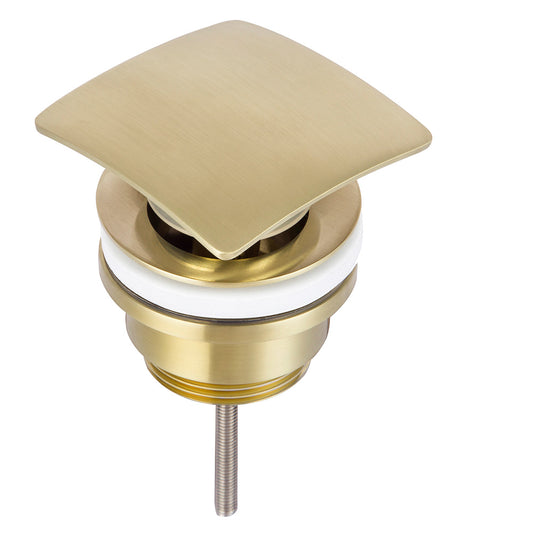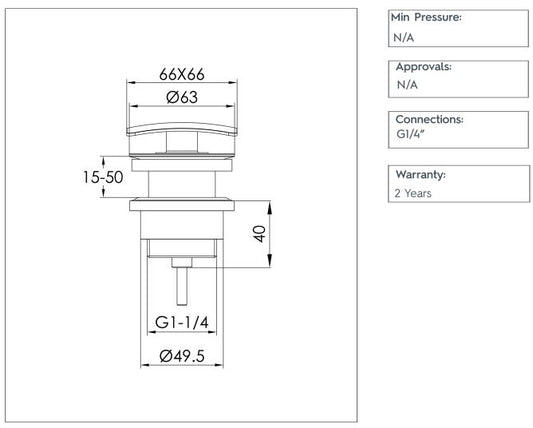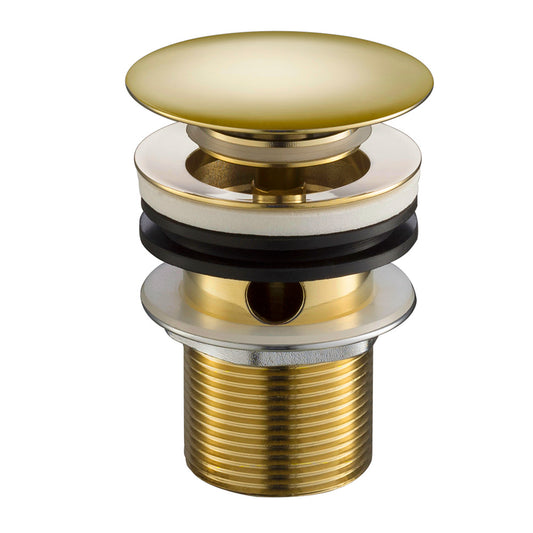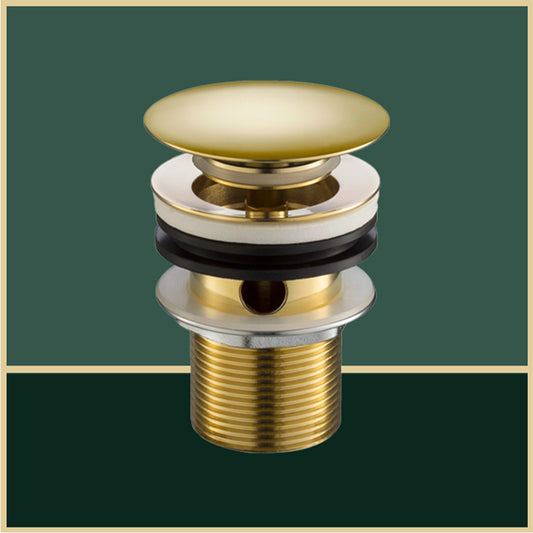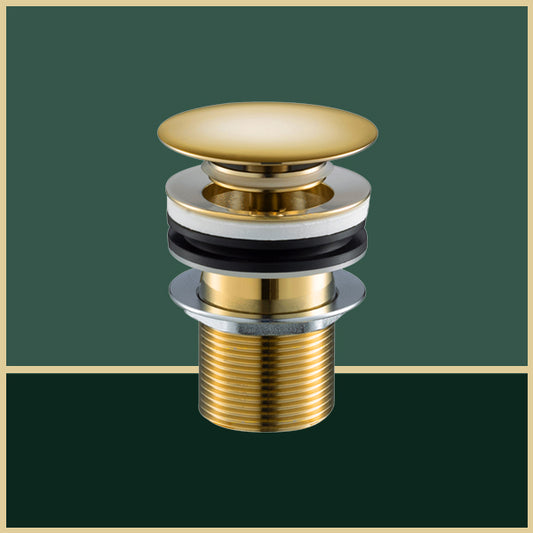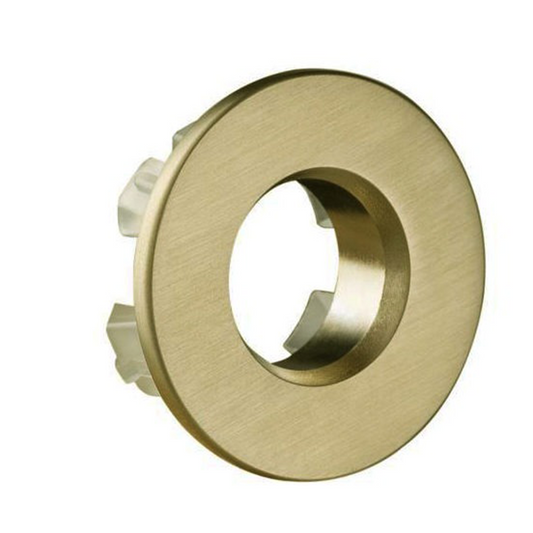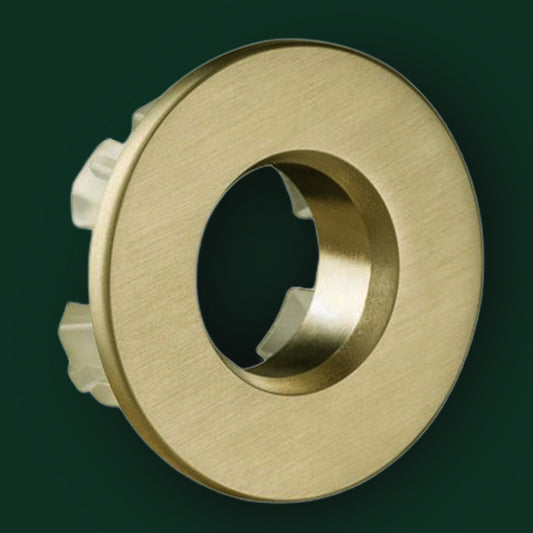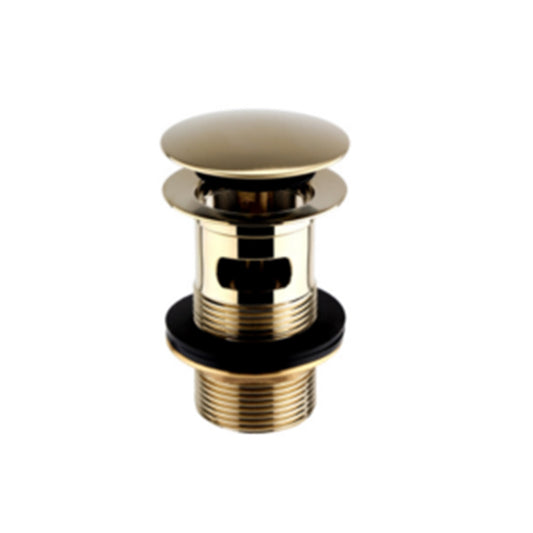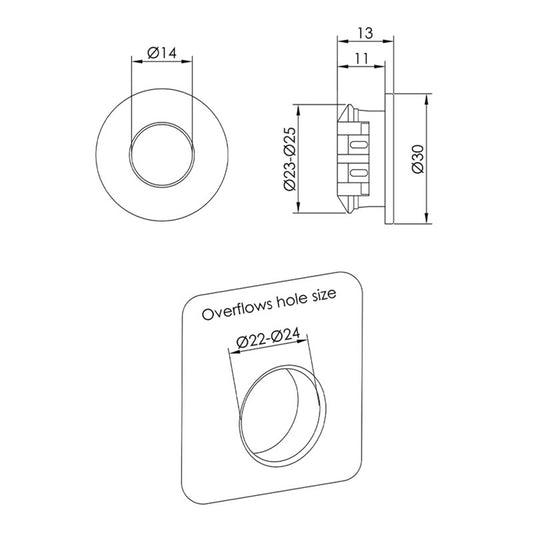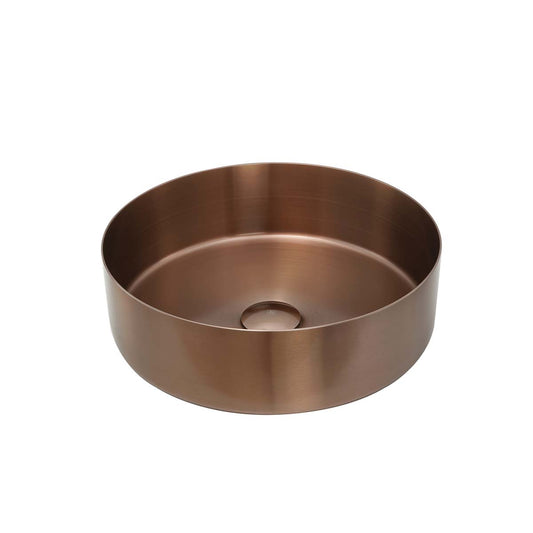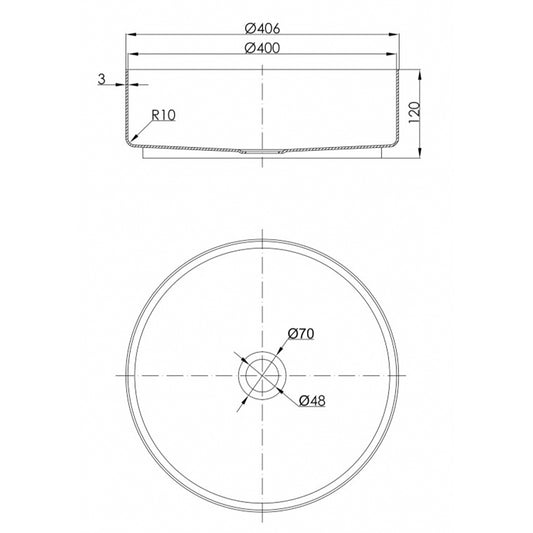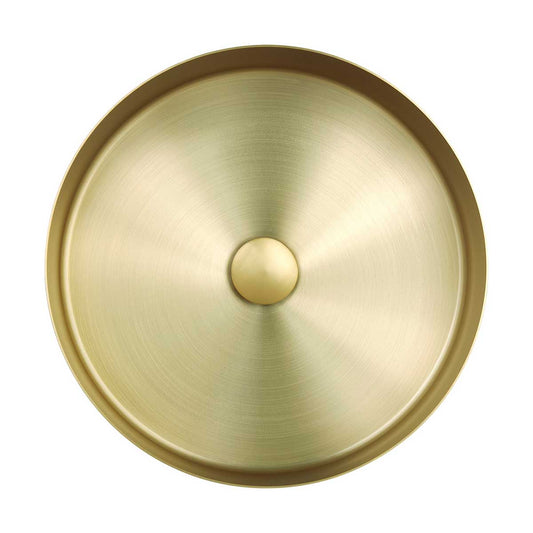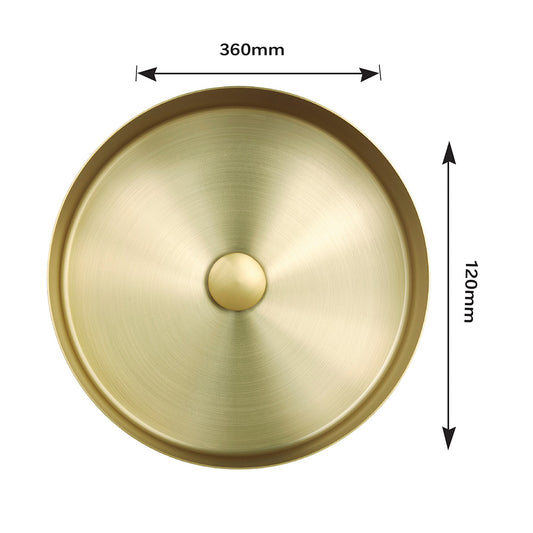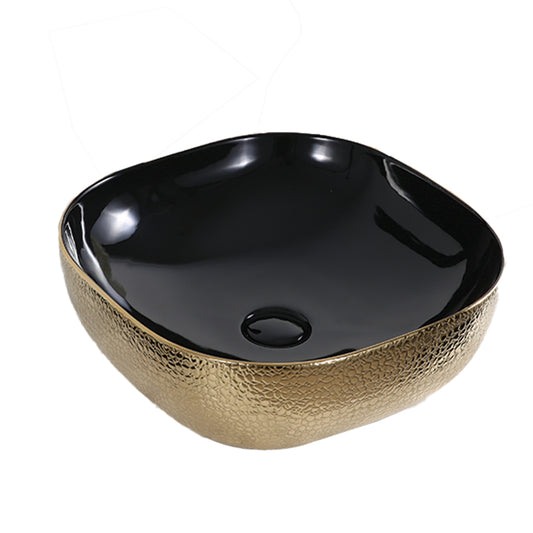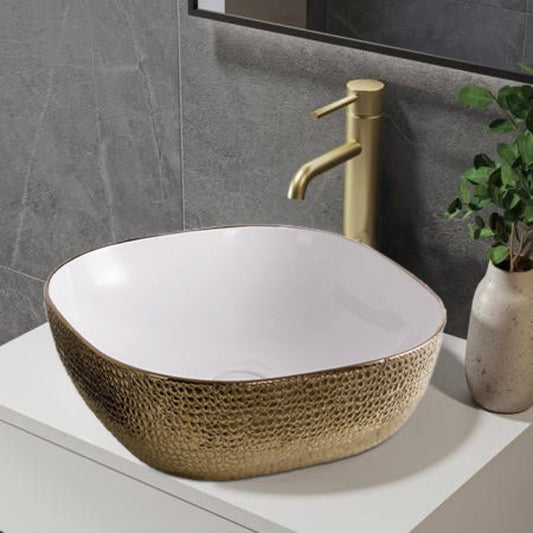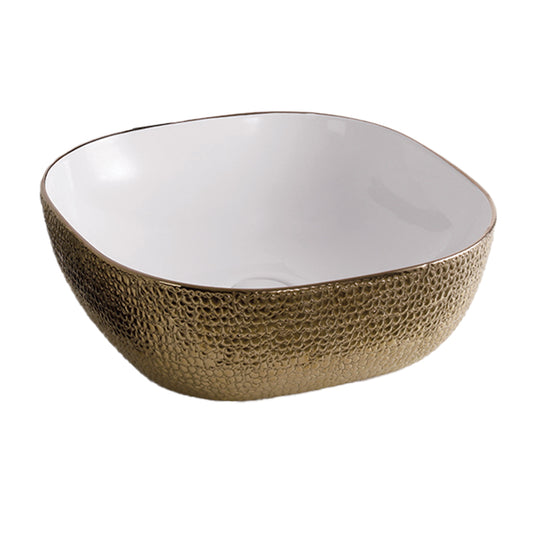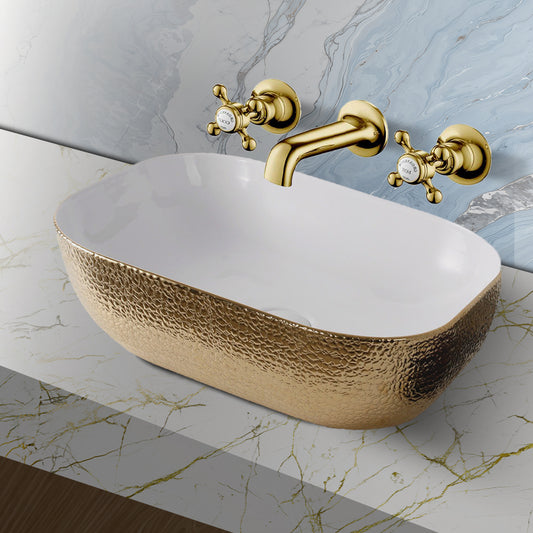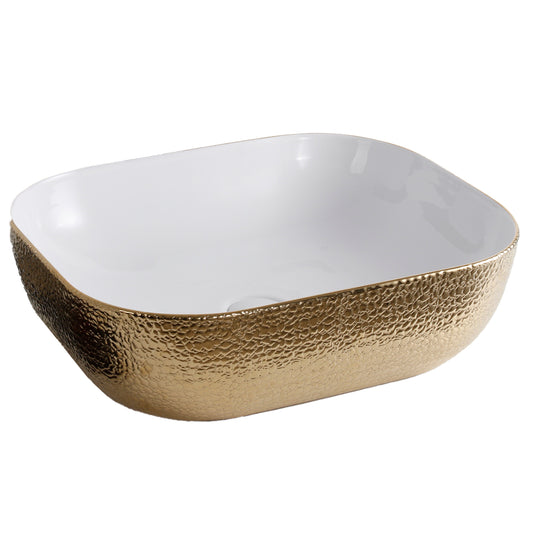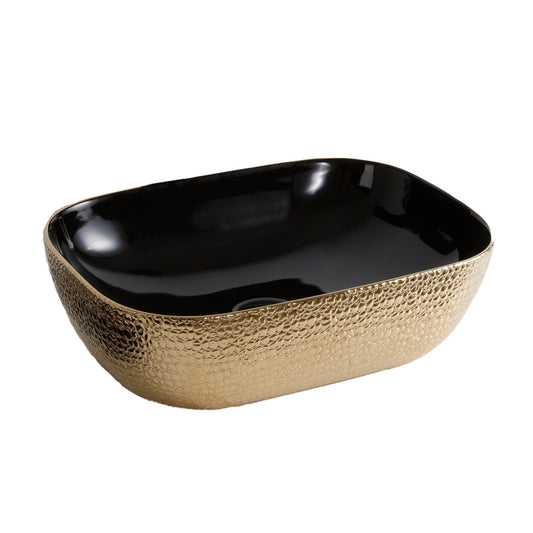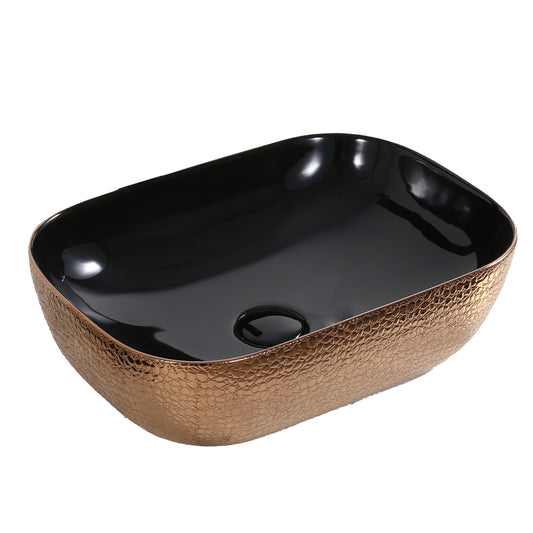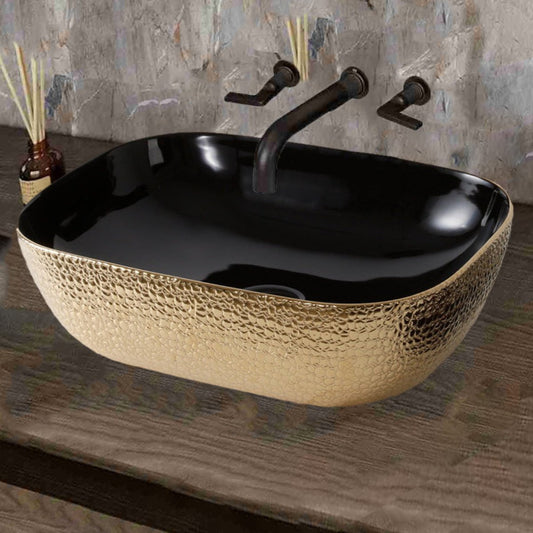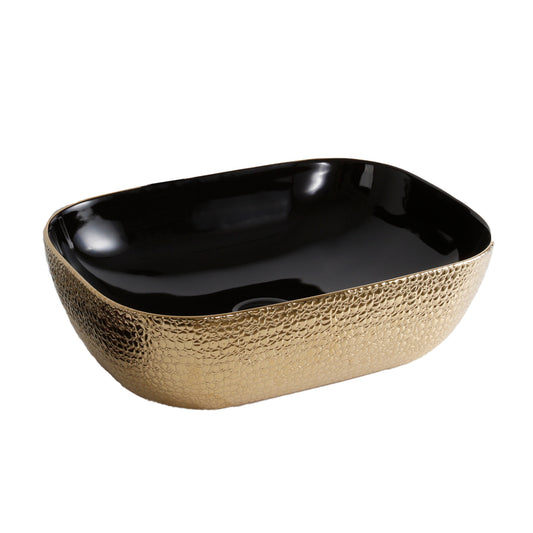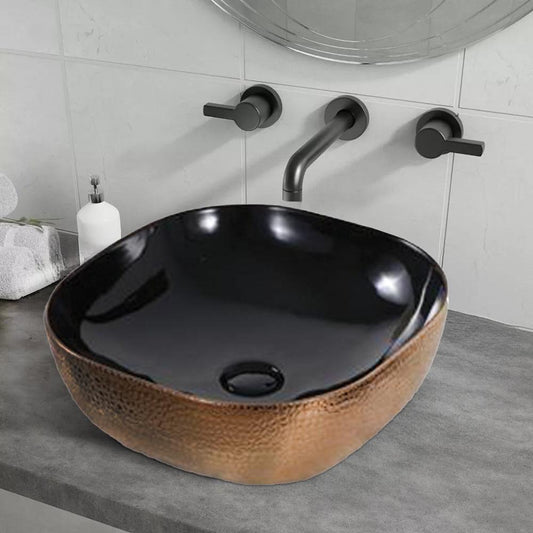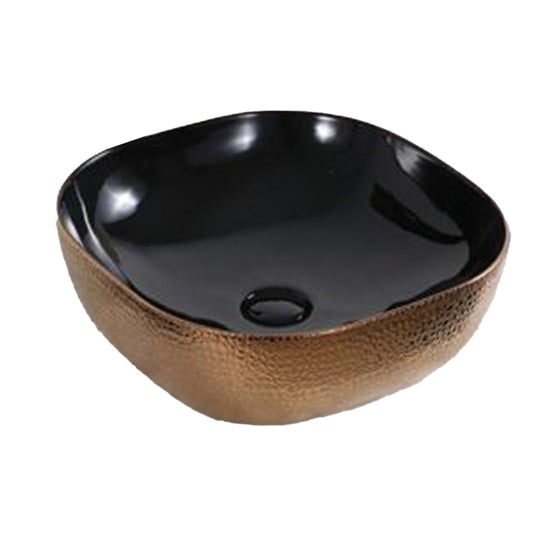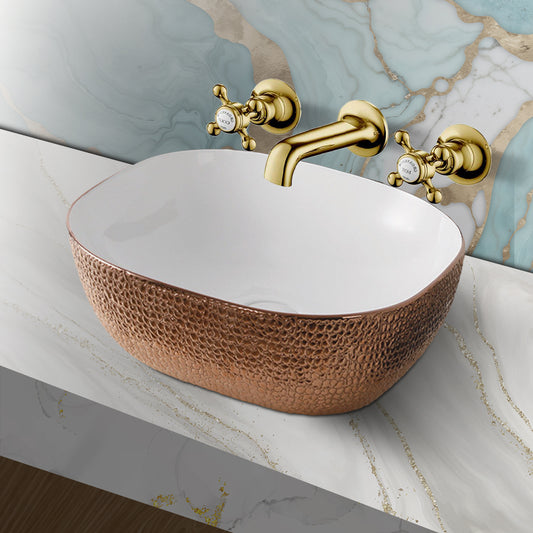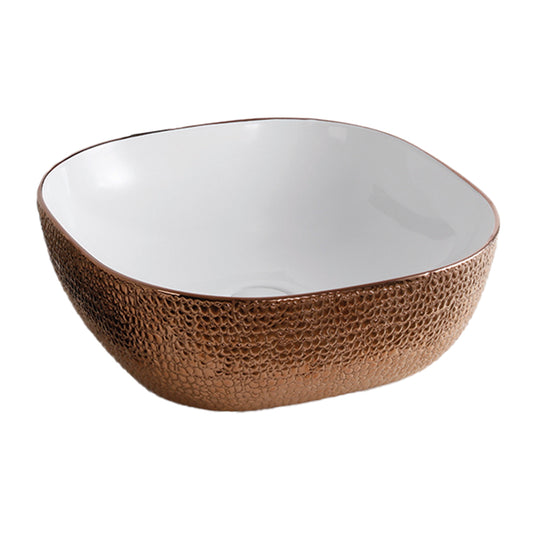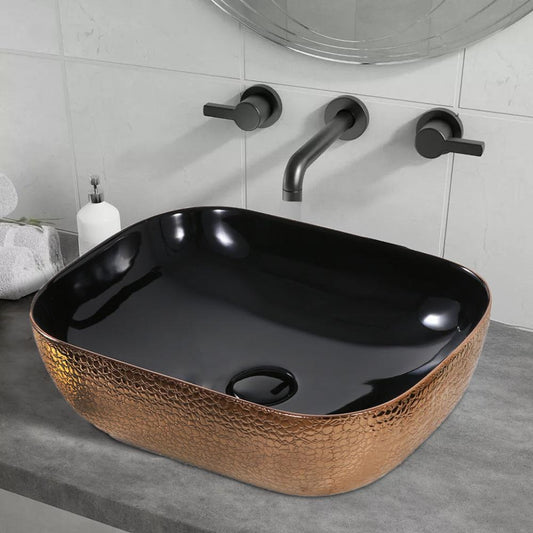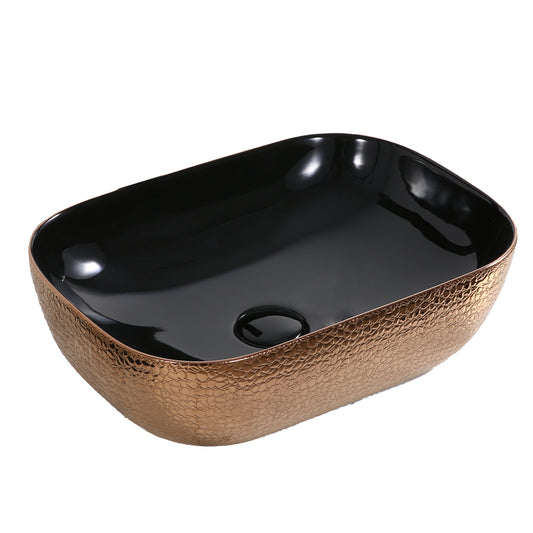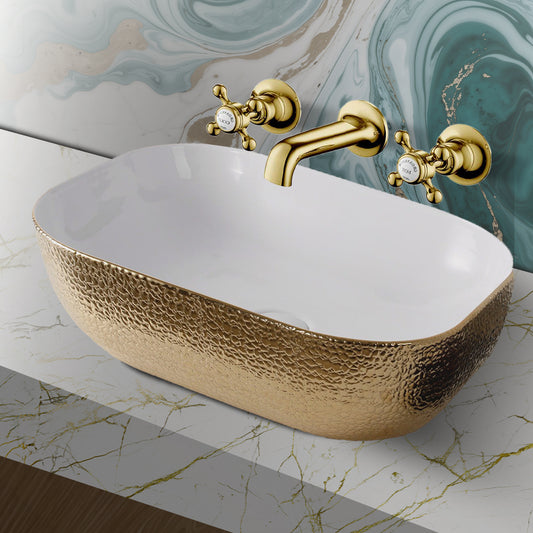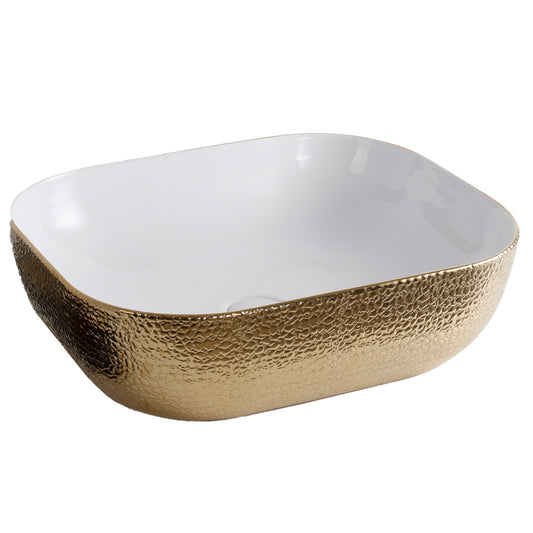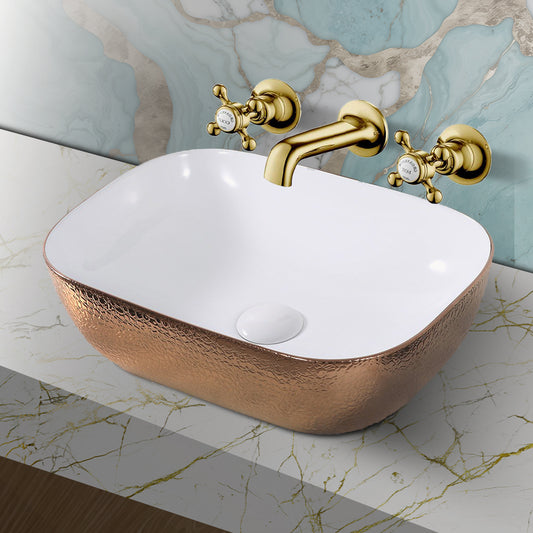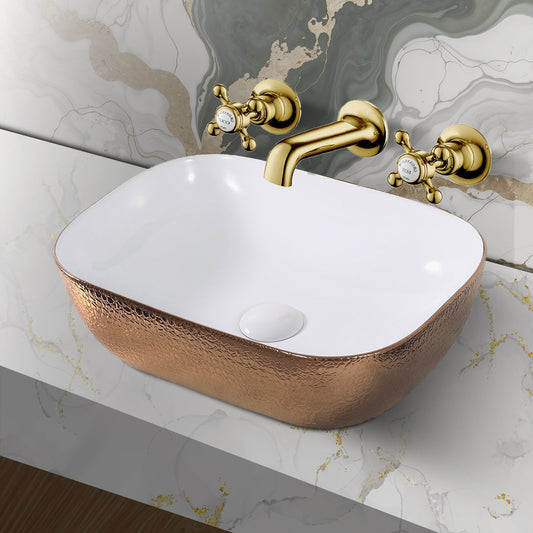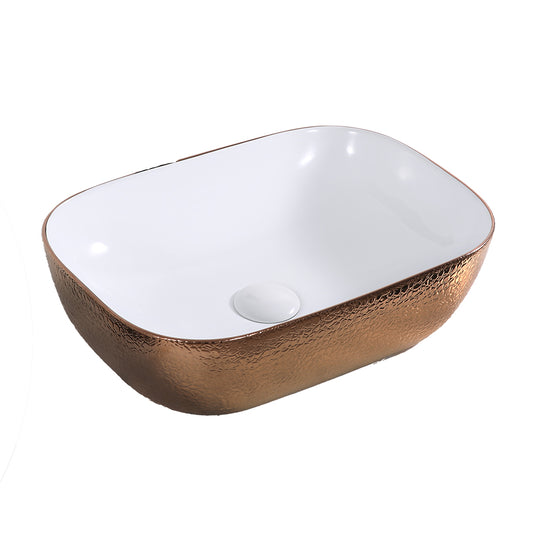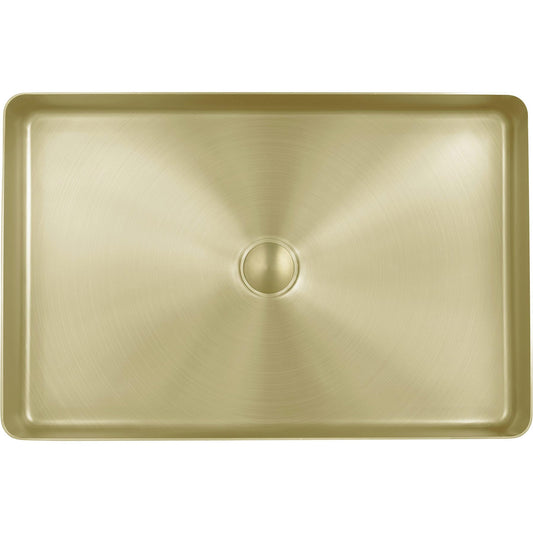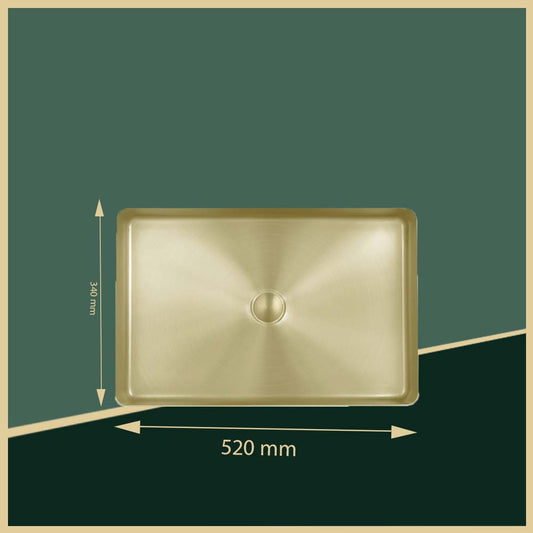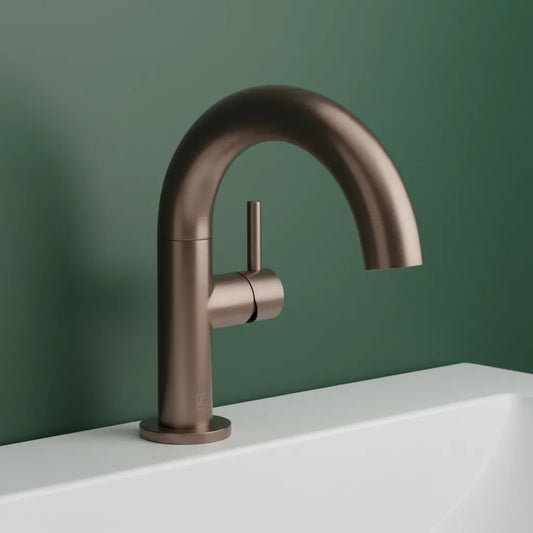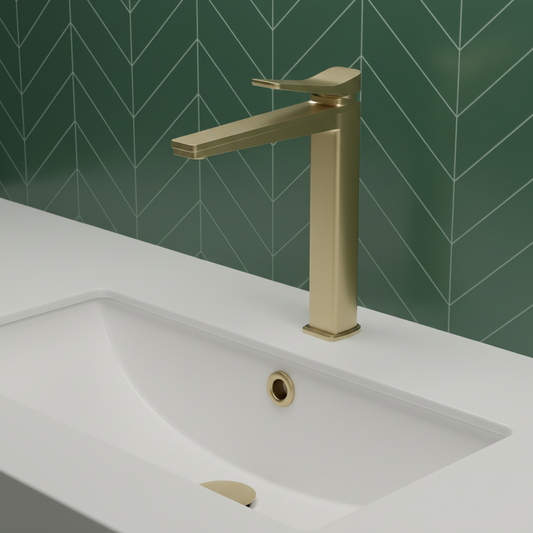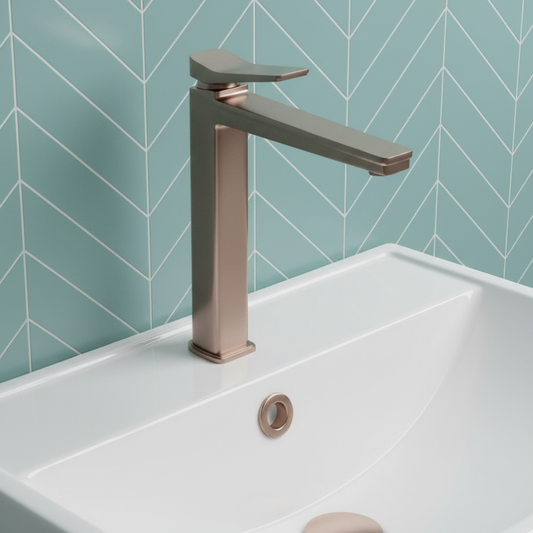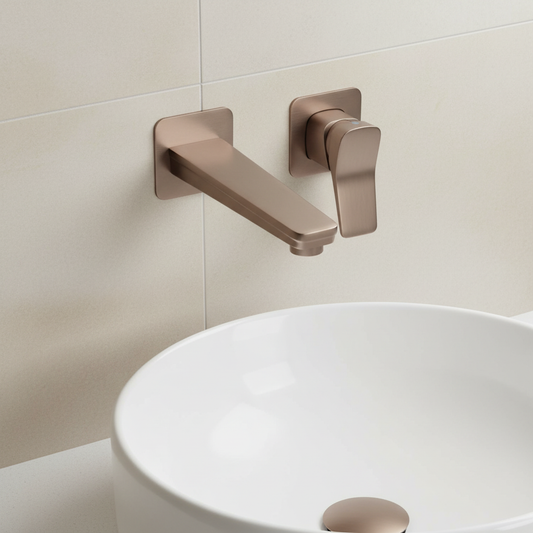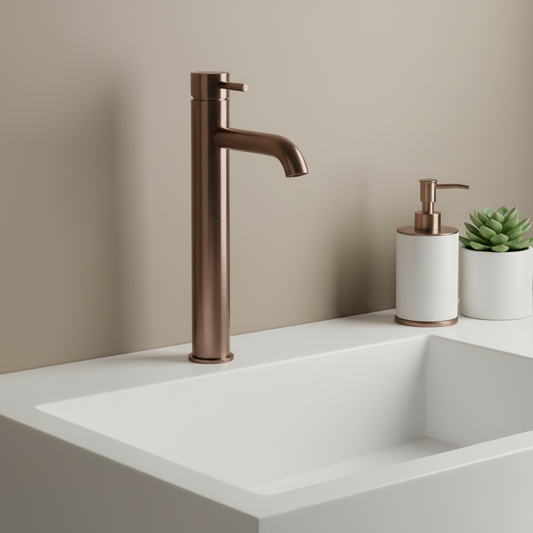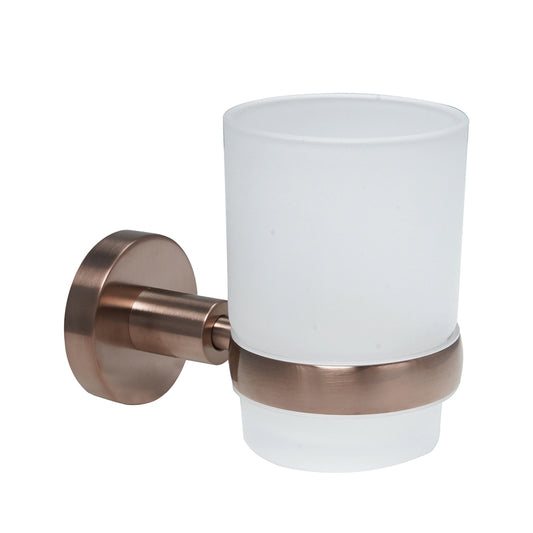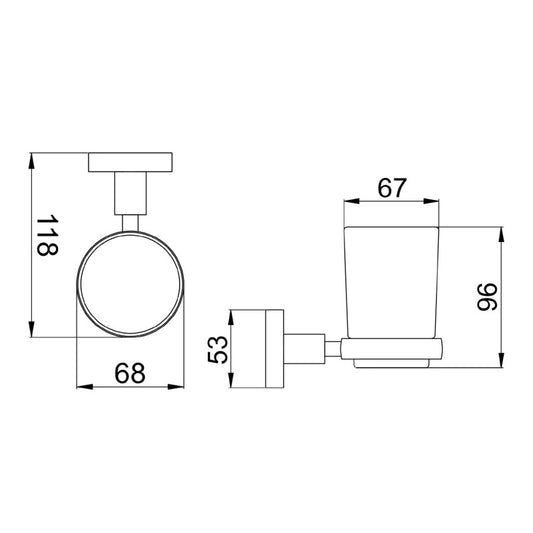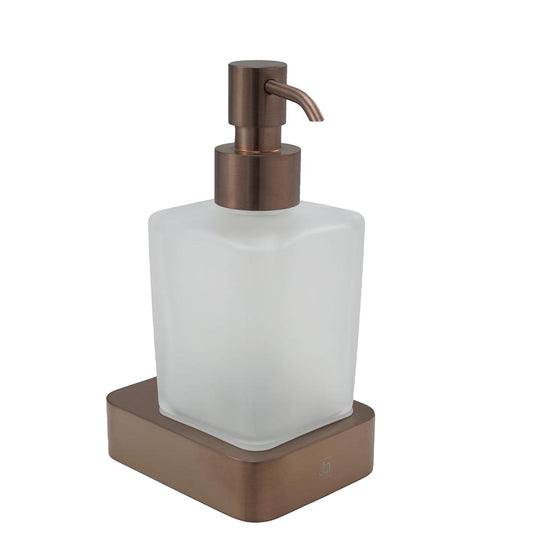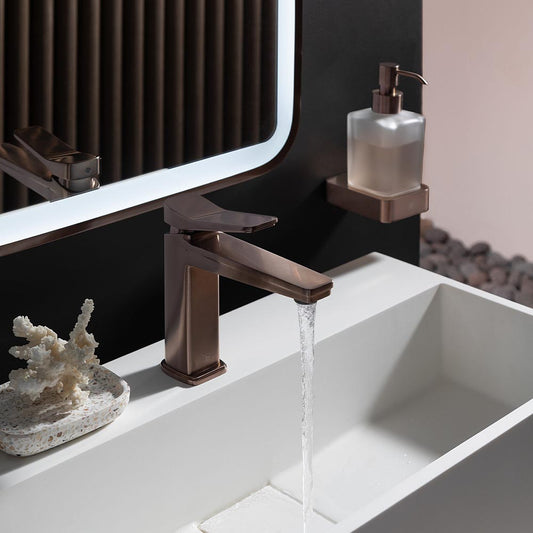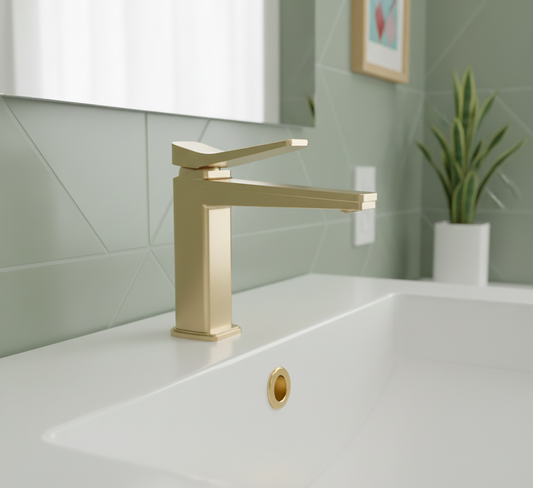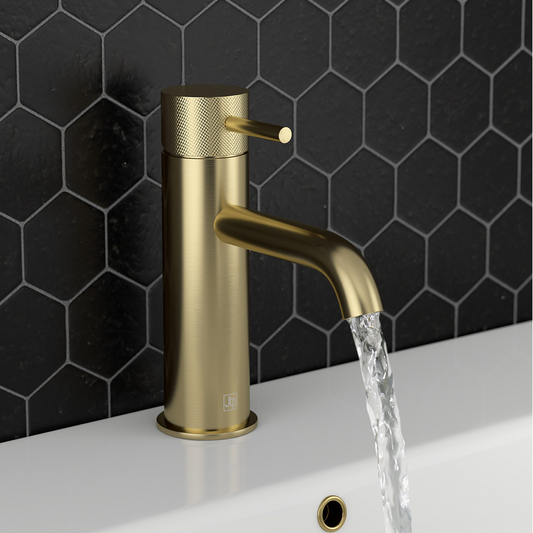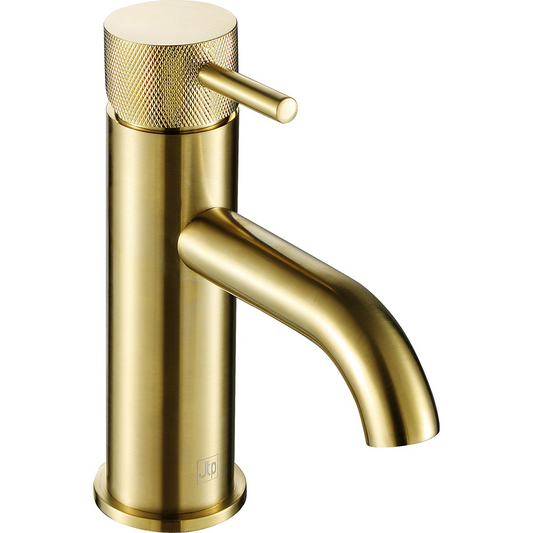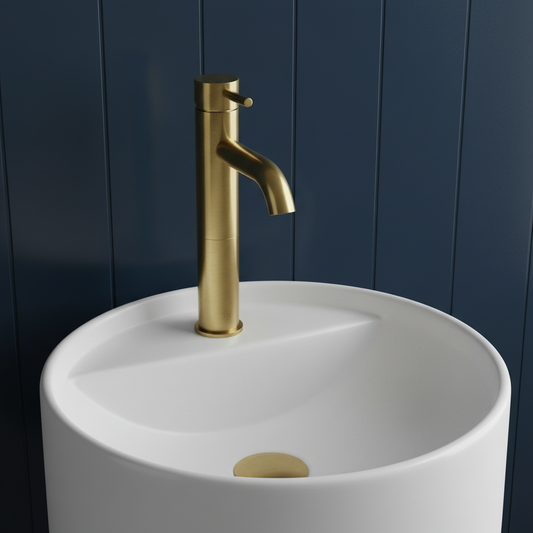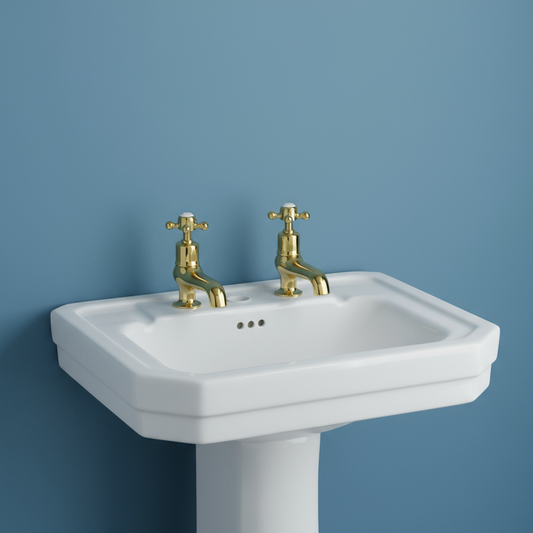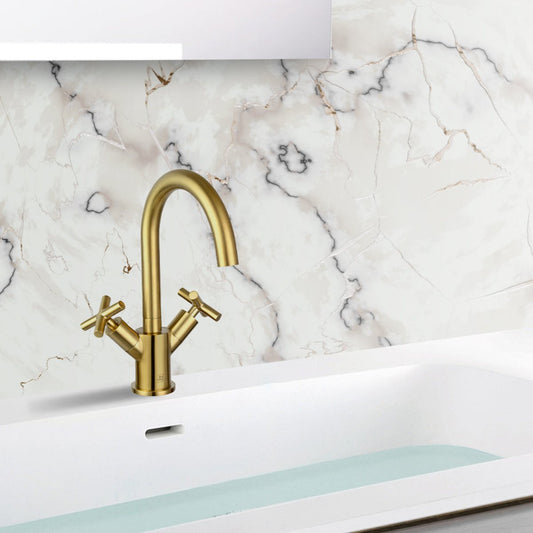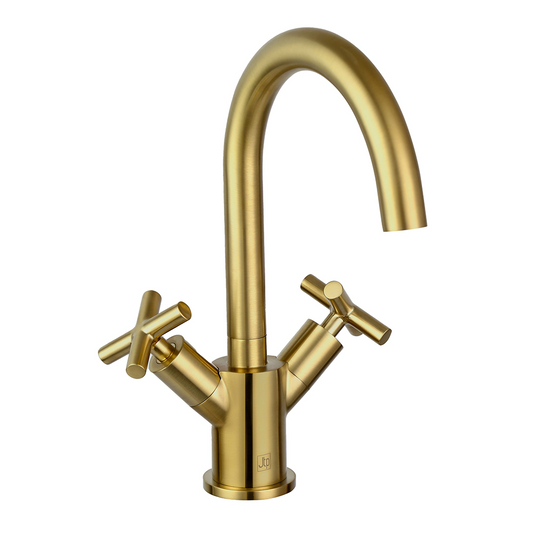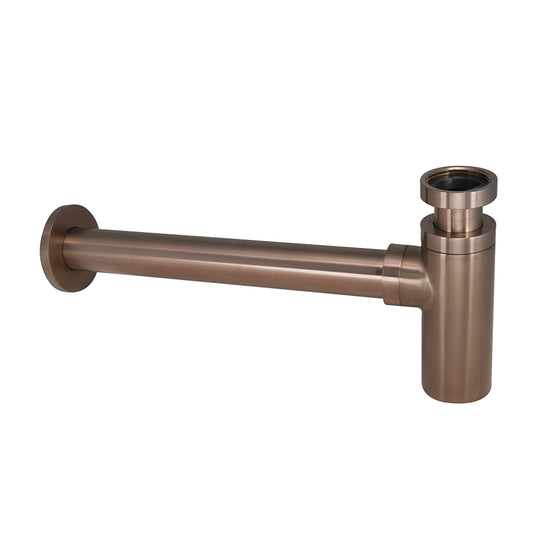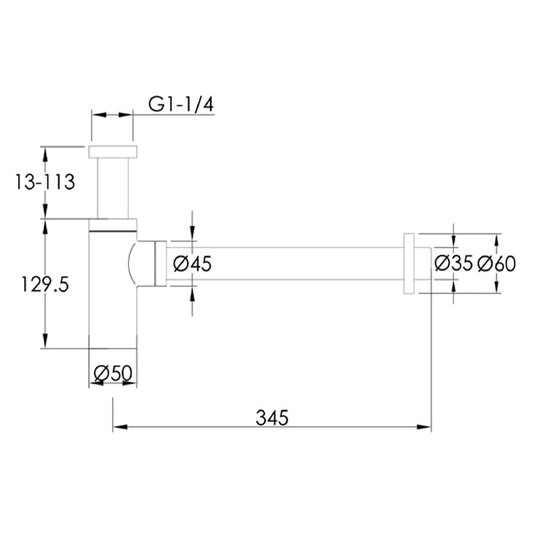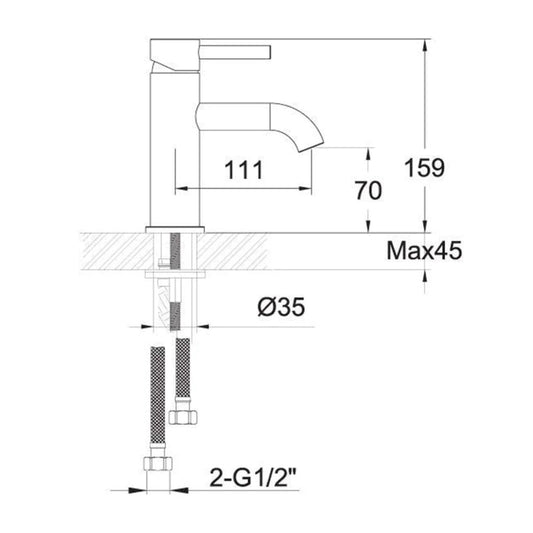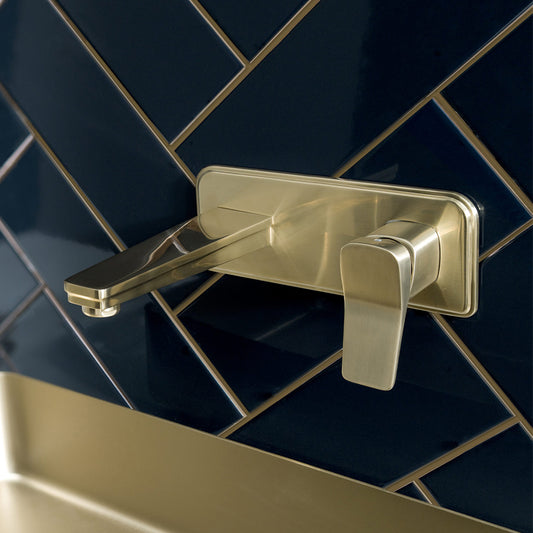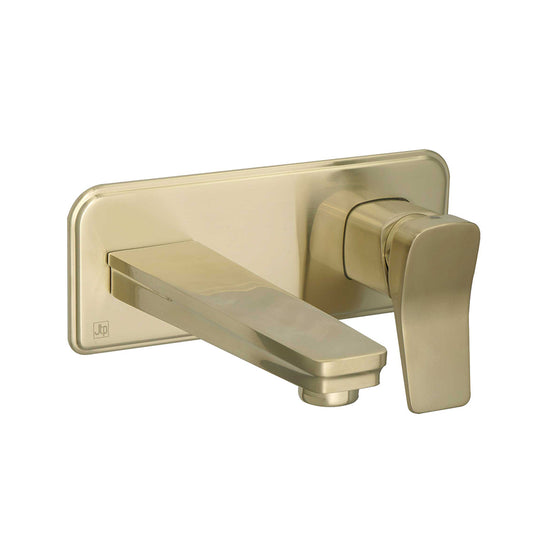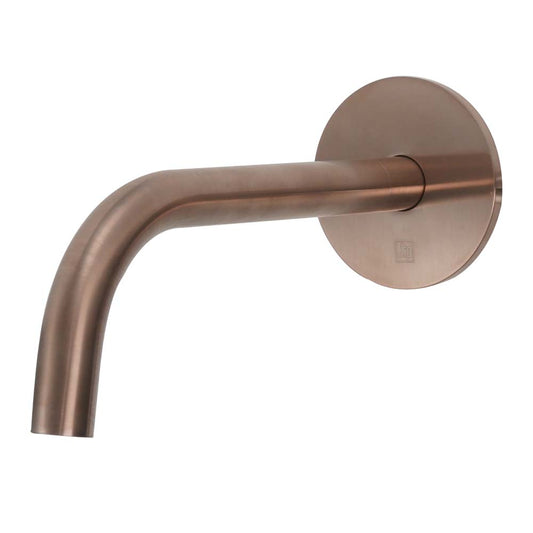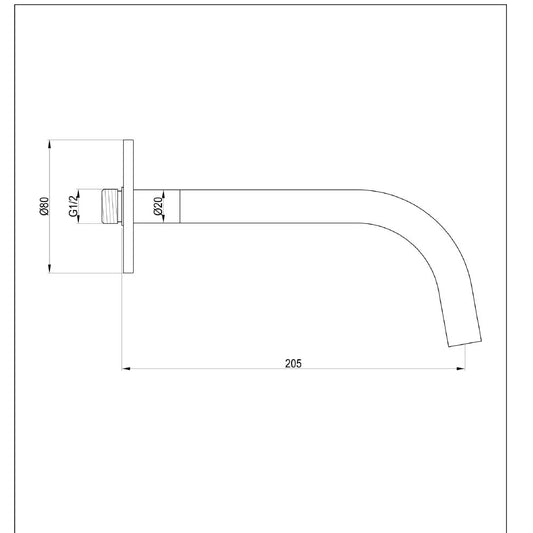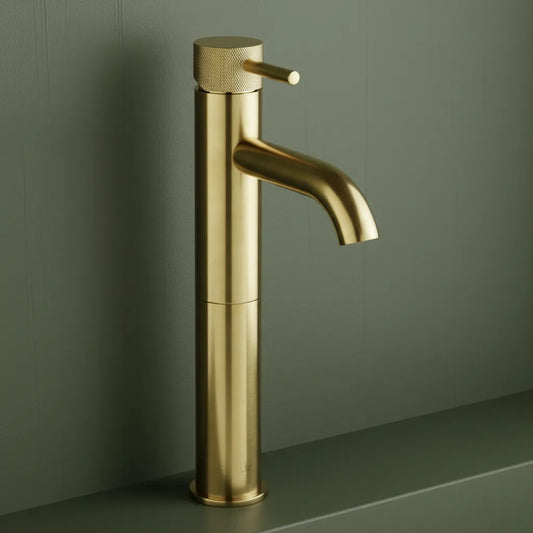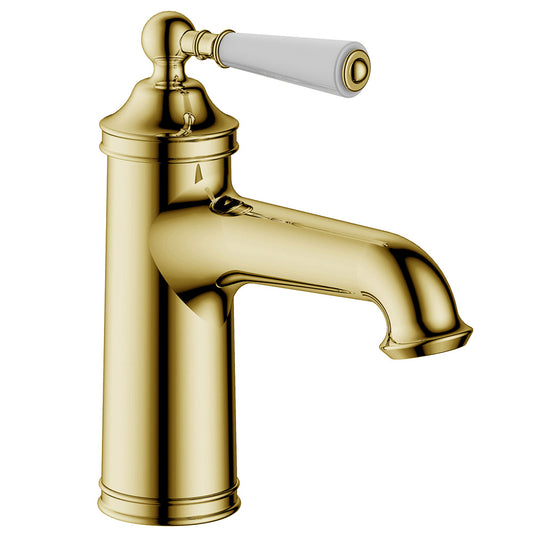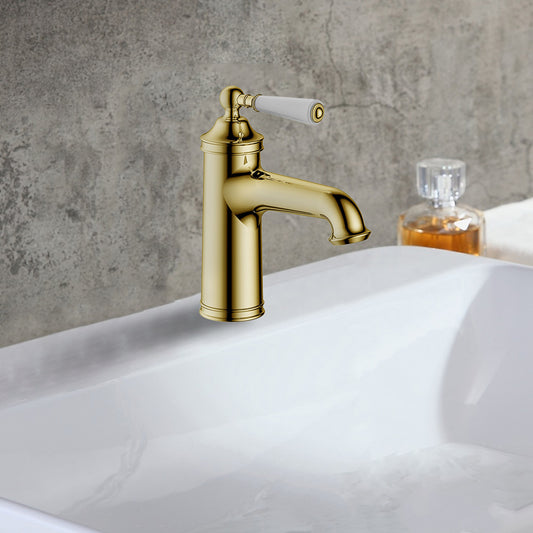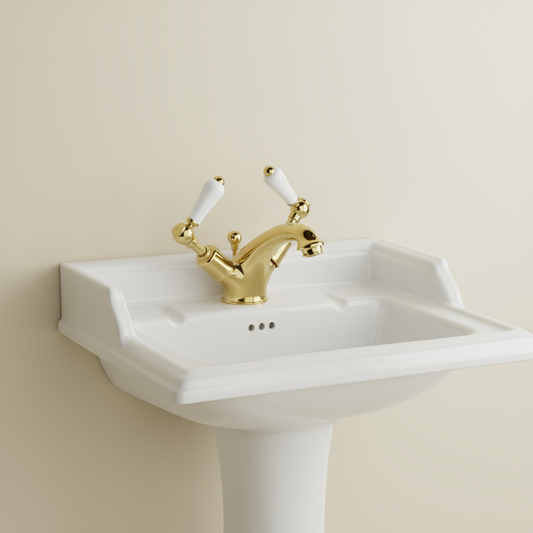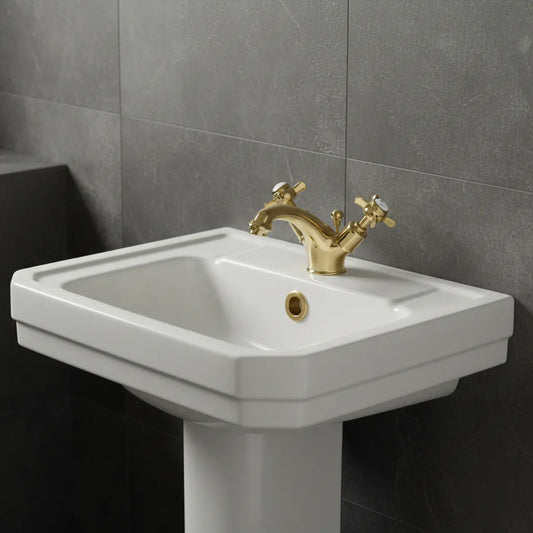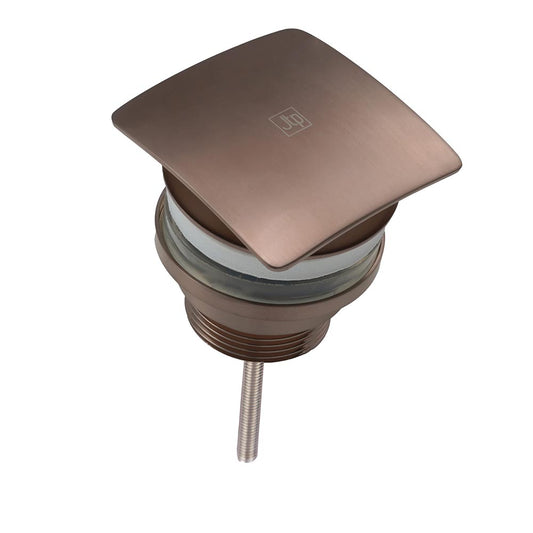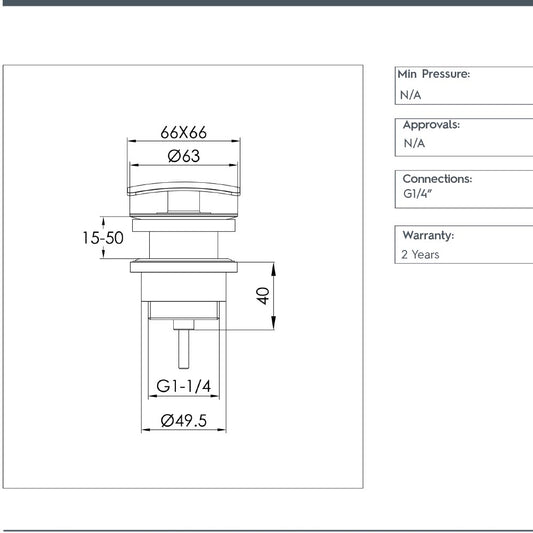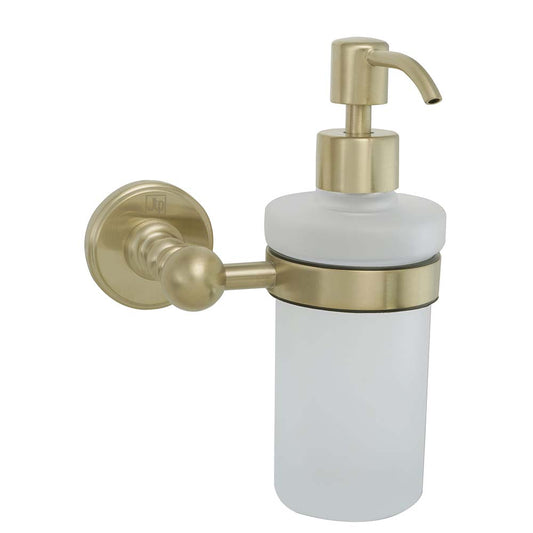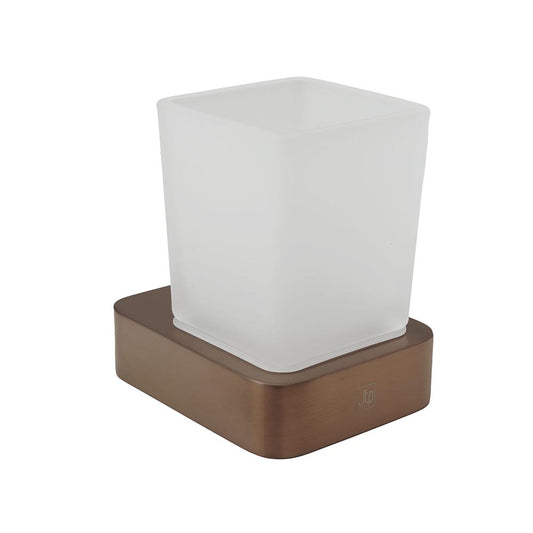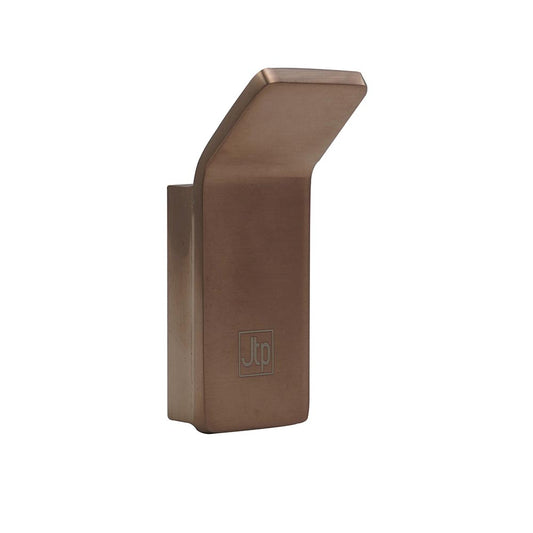How to Unblock a Bathroom Sink: Quick and Easy Solutions
Table Of Contents:
-
How to Unblock Your Bathroom Sink Without Breaking a Sweat or Your Wallet
→ -
Basin Wastes Collection
→ -
Blocked Bathroom Sink
→ -
Tools and Equipment
→ -
DIY Unblocking Methods
→ -
Cost Considerations
→ -
Chemical Cleaners
→ -
Alternative Solutions
→ -
General Sink Maintenance
→ -
Conclusion
→ -
Common FAQs
→
How to Unblock Your Bathroom Sink Without Breaking a Sweat or Your Wallet
Blocked bathroom sinks are a common household nuisance, but tackling them doesn’t have to be a daunting task. Our guide stands out by offering practical, easy-to-follow solutions using everyday items and simple tools, making it accessible for everyone. In this blog, you’ll discover effective DIY methods for unblocking your sink, from natural remedies like baking soda and vinegar to the use of a trusty plunger. You’ll also learn how to identify and prevent future blockages, ensuring your sink stays in top working condition. Dive in to uncover solutions that can save you time, money, and the hassle of calling a plumber!
Blocked Bathroom Sink
Causes of Blockages
1. Waste Materials from Daily Use: Blockages in bathroom sinks often result from the accumulation of waste materials such as soap scum, toothpaste, and hair. Soap scum, formed when soap reacts with minerals in hard water, can create a sticky layer inside the pipes. This residue, combined with hair shed during grooming or washing, gradually builds up over time, forming clumps that obstruct water flow. As these materials accumulate, they restrict the passage of water, leading to slow drainage and potential clogs.
Hair, in particular, can be a major contributor to sink blockages. When hair is washed down the drain, it can become tangled with soap scum and other debris, forming a dense mat that clogs the pipes. This problem is exacerbated if the sink is not equipped with a strainer or if hair is not removed promptly.
2. Blockages in the Soil Pipe: The soil pipe is crucial for transporting waste from various fixtures to the main drainage system. Blockages in the soil pipe can cause significant drainage issues throughout the home, not just in the bathroom sink. These blockages can occur due to the accumulation of organic waste or foreign objects accidentally flushed down the drain. When the soil pipe becomes obstructed, it disrupts the normal flow of wastewater, leading to backups and slow drainage in the sink.
Additionally, soil pipe blockages can impact the overall efficiency of the household drainage system. If the soil pipe is clogged, it can lead to slow drainage in multiple fixtures, including sinks, toilets, and showers.
3. Poor Workmanship and Fittings: Inadequate installation or faulty fittings can lead to frequent blockages in a bathroom sink. Issues such as improperly connected pipes, incorrect pipe sizing, or poorly sealed joints can obstruct the flow of water and contribute to clogs. For instance, if pipes are not aligned correctly or if there are sharp bends, debris can easily accumulate and create blockages. Poor workmanship can also result in leaky or insecure fittings that exacerbate the problem. Ensuring that plumbing work is done to a high standard and regularly inspecting for potential issues can help prevent blockages caused by substandard installations.
If you suspect that poor workmanship is contributing to frequent sink blockages, addressing these issues promptly is essential. An inspection by a professional plumber can identify and rectify installation problems, ensuring that pipes and fittings are correctly installed and functioning as intended.
4. Impact of Bad Weather and External Factors: Severe weather conditions can significantly affect your home’s drainage system, potentially leading to blockages. Heavy rainfall and storms can overwhelm the drainage system, causing debris to be washed into the pipes or soil pipe, leading to clogs. Additionally, external factors such as falling leaves, branches, or construction debris can obstruct external drainage systems and soil pipes, indirectly affecting the bathroom sink’s drainage.
External factors can also contribute to drainage problems by introducing debris and obstructions into the plumbing system. For example, blocked external drains or soil pipes can cause backups that affect the bathroom sink and other fixtures. Regular maintenance of both internal and external drainage systems is essential to prevent blockages caused by environmental conditions.
Signs of a Blocked Sink
-
Slow Drainage: Slow drainage is a common and early sign of a blockage in the bathroom sink. When the sink begins to drain more slowly than usual, it indicates that debris or buildup is obstructing the pipe. Over time, what starts as a minor slowdown can develop into a complete blockage, leading to more significant drainage issues. Identifying and addressing slow drainage promptly can help prevent more severe clogs and maintain proper sink function.
-
Foul Odors: Foul odors emanating from the sink are often a sign of a blockage. As organic materials such as food particles, hair, and soap scum decompose, they can produce unpleasant smells. These odors result from bacteria and mold that thrive in the stagnant water and decomposing waste trapped in the pipes. If you notice persistent bad smells coming from your sink, it’s crucial to address the issue promptly by cleaning the drain and checking for any blockages.
-
Standing Water: Standing water in the sink is a clear indicator of a blockage. When water fails to drain properly, it collects in the basin, signaling that the flow through the pipes is obstructed. Standing water not only makes the sink unusable but also poses a risk of water damage and potential growth of mold and mildew. Addressing the cause of standing water quickly is important to prevent these secondary issues.

Tools and Equipment
- Plunger
- Rubber Gloves
- Towels
- Pipe Wrench
- Plumber’s Snake
- Wire Coat Hanger or Auger
- Bucket
- Drain Cleaner (optional)

DIY Unblocking Methods
When your bathroom sink is blocked, there are several effective DIY methods you can use to clear the clog. Here’s a detailed guide on various techniques to try:
1. Baking Soda and Vinegar
Materials Needed: Baking soda, vinegar, boiling water.
Procedure:
-
Boil Water: Start by heating a kettle of water until it reaches a rolling boil. The high temperature helps to loosen and dissolve any debris or grease that may be obstructing the sink.
-
Mix Ingredients: Measure out about one cup of baking soda and one cup of vinegar. Baking soda is a mild alkali, and vinegar is an acid; when mixed, they create a chemical reaction that produces fizzing. This reaction helps to break down the clog by loosening debris.
-
Pour Mixture: Carefully pour the baking soda directly into the drain. Follow this by pouring the vinegar over the baking soda. The fizzing action will help to dislodge and break up the blockage.
-
Wait: Let the mixture sit undisturbed in the drain for approximately 8-10 minutes. During this time, the chemical reaction is working to dissolve any buildup and clear the pipe.
-
Flush: After the waiting period, pour another kettle of boiling water down the drain to flush away the dissolved debris and any remaining baking soda and vinegar.
This method is particularly effective for minor blockages caused by grease, soap scum, and other common residues. It’s also eco-friendly and non-toxic.
2. Soda Crystals
Materials Needed: Soda crystals, boiling water.
Procedure:
-
Remove Standing Water: If there is water sitting in the sink, scoop it out using a cup or container. You can also use a towel to soak it up if necessary. Removing standing water ensures that the soda crystals can effectively work on the clog.
-
Add Soda Crystals: Pour a generous amount of soda crystals into the drain. Soda crystals are a strong alkaline substance that helps to break down fats, oils, and grease in the pipes.
-
Flush with Boiling Water: Immediately follow up by pouring boiling water over the soda crystals. The heat helps to activate the crystals and assists in dissolving the blockage.
-
Repeat if Necessary: For stubborn clogs that are not cleared on the first attempt, you may need to repeat the process. Pour additional soda crystals and boiling water until the blockage is resolved.
Soda crystals are highly effective against grease and can be a powerful alternative to chemical drain cleaners.
3. Plunger
Materials Needed: Plunger, rubber gloves.
Procedure:
-
Check Pop-Up Stopper: Ensure the sink’s pop-up stopper (the mechanism that closes the drain) is fully in place. This will help create a better seal when using the plunger.
-
Close Sink Overflow: To create maximum pressure, cover the sink’s overflow opening with a wet cloth or your hand. This prevents air from escaping and directs the force of the plunger into the drain.
-
Position and Use the Plunger: Place the plunger directly over the drain opening. Press down firmly to create suction and then pull up quickly. Repeat this pushing and pulling motion several times to help dislodge the clog.
-
Flush with Hot Water: After using the plunger, run hot water down the drain to help flush away any loosened debris and to check if the blockage has been cleared.
A plunger is useful for clearing clogs that are close to the drain opening and can often resolve issues caused by minor obstructions.
4. U-Bend (P-Trap)
Materials Needed: Pipe wrench, bucket, rubber gloves.
Procedure:
-
Place Bucket: Place a bucket or container under the U-bend (also known as a P-trap) to catch any water or debris that may spill out when you remove the trap.
-
Unscrew and Remove U-Bend: Use a pipe wrench to carefully unscrew and remove the U-bend from under the sink. Be prepared for some water to spill out, so the bucket will catch it.
-
Clean Out Debris: Inspect the U-bend for any trapped debris, hair, or gunk that could be causing the blockage. Use your hands or a small brush to remove the debris from the inside of the U-bend.
-
Reattach U-Bend: Once cleaned, screw the U-bend back into place. Ensure that it is securely fastened to prevent any leaks.
-
Test Water Flow: Turn on the faucet to check if water flows freely through the drain. If the blockage is cleared, you should see normal drainage.
Cleaning the U-bend is effective for blockages that occur in the trap and is a good method for addressing clogs that have accumulated near the sink.
5. Salt
Materials Needed: Iodized salt, vinegar, boiling water.
Procedure:
-
Mix Ingredients: Combine about one cup of iodized salt with one cup of vinegar. The salt acts as an abrasive to help dislodge the blockage, while vinegar aids in dissolving the debris.
-
Pour Down Drain: Pour the salt and vinegar mixture directly into the sink drain. The combination creates a reaction that can help to break down clogs.
-
Wait: Allow the mixture to sit in the drain for about 15 minutes. This waiting period lets the salt and vinegar work on breaking up the blockage.
-
Flush with Boiling Water: After waiting, flush the sink with boiling water to rinse out the debris and clear the pipes.
Using salt and vinegar is a natural method that can help remove minor blockages and keep your sink in good condition.

Cost Considerations
DIY Costs
When addressing a blocked sink yourself, the costs are relatively minimal. You’ll need to invest in some basic tools and cleaning supplies. Common tools include a plunger, pipe wrench, and possibly a plumber’s snake or wire coat hanger. Cleaning products such as baking soda, vinegar, soda crystals, and salt are inexpensive and readily available. Overall, DIY methods generally cost between £10 and £30, depending on the tools and supplies you already have at home.
Professional Service Costs
If DIY methods don’t resolve the issue, hiring a professional plumber may be necessary. Professional services typically range from £60 to £120 per hour, depending on the plumber's rates and the complexity of the blockage. The total cost can vary based on the severity of the blockage, the location, and the need for additional repairs. For example, if the blockage is due to external drainage issues or a more complex plumbing problem, the costs can increase significantly.
External Blockage Costs
Addressing blockages in external drainage systems, such as soil pipes or main drains, can be more costly. These types of issues may require excavation or specialized equipment to resolve. The costs for professional services in these cases can range from £150 to £500 or more, depending on the extent of the blockage and the required repairs. Regular maintenance and prompt attention to external drainage issues can help manage these costs over time.

Chemical Cleaners
Effectiveness
Chemical cleaners are designed to dissolve tough blockages and can be effective for severe clogs. Products containing lye, sulfuric acid, or hydrochloric acid can break down organic matter and clear blockages. However, they should be used with caution. Follow the manufacturer’s instructions carefully to avoid damaging your pipes or fixtures. Despite their effectiveness, chemical cleaners may not be suitable for all types of plumbing systems.
Risks and Cautions
While chemical cleaners can be powerful, they come with risks. The harsh chemicals used in these products can cause damage to pipes, especially if they are old or made from sensitive materials like PVC. Additionally, these cleaners can be hazardous to your health; improper use or exposure can lead to burns or respiratory issues. It’s crucial to use them in well-ventilated areas, wear protective gloves and goggles, and never mix different types of chemicals.
Alternative Solutions
Usin Fizzy Drinks
A fizzy drink contains phosphoric acid, which can help break down minor clogs and dissolve grease. To use this method, pour a liter of fizzy drink down the drain, let it sit for a few hours (or overnight for tougher blockages), and then flush with hot water. While this method can be surprisingly effective for minor clogs, it’s not as potent as other methods for severe blockages.
Bleach
Bleach can be used to disinfect and help break down blockages in your sink. Pour a cup of bleach down the drain, let it sit for 30 minutes to an hour, and then flush with hot water. This method helps to remove bacteria and can aid in breaking down blockages. However, like chemical cleaners, bleach can be harsh on your plumbing and should be used sparingly. Ensure that the sink is well-ventilated during and after use, and avoid mixing bleach with other cleaning products.
Other Commercial Products
Various commercial products are available specifically designed to address sink blockages. These products often come in liquid or gel forms and are formulated to clear clogs without damaging pipes. When choosing a commercial product, look for those that are compatible with your plumbing system and follow the usage instructions carefully. Many of these products also include enzymes or natural agents that can help in breaking down blockages more gently than harsh chemical cleaners.

General Sink Maintenance
Maintaining your bathroom sink properly is essential for ensuring that it remains functional and free from blockages. By incorporating a few key practices into your routine, you can keep your sink in good condition, prevent common issues, and avoid expensive repairs.
1. Routine Cleaning and Inspection
Routine Cleaning
Regular cleaning of your sink prevents the accumulation of grime, soap scum, and other residues that can lead to blockages. Start by using a mild detergent and warm water to wash the sink’s surface. A soft cloth or sponge works well for this purpose. Pay special attention to the faucet handles and the area around the drain. For a more thorough clean, consider using a non-abrasive cleaner that is suitable for your sink material, whether it’s porcelain, stainless steel, or another finish. Additionally, cleaning the sink regularly helps prevent unpleasant odors and maintains the overall hygiene of your bathroom. Avoid using harsh chemicals or abrasive scrubbers, as they can damage the sink’s finish and plumbing. Periodically, use a small brush or pipe cleaner to address any debris around the drain, ensuring that minor build-ups do not turn into larger blockages.
Inspection
In addition to regular cleaning, periodic inspection is crucial for identifying potential issues early. Check the sink for any signs of damage, such as cracks, rust, or corrosion, particularly around the faucet and drain areas. Inspect the sink’s overflow channel to ensure it is clear of debris. Also, examine the faucet handles and connections for any signs of leakage or wear. Early detection of issues allows for prompt repairs, which can prevent more severe problems from developing. For instance, spotting a small leak early can help avoid water damage to the sink’s surrounding areas. Regular inspections also give you the opportunity to address any minor issues before they escalate, ensuring the long-term functionality of your sink.
2. Proper Disposal Practices
Avoid Flushing Grease and Large Food Scraps
One of the most significant contributors to sink blockages is the disposal of grease, fats, and large food scraps. When grease is poured down the drain, it cools and solidifies in the pipes, leading to the build-up of stubborn blockages. Similarly, large food scraps can get stuck in the pipes, causing clogs. Instead of using the sink as a disposal unit for these substances, opt for alternative methods. Dispose of grease and fats in a heat-resistant container and throw it in the trash once it has solidified. For food scraps, use a compost bin or the trash. By adopting these practices, you significantly reduce the risk of clogs and maintain the efficiency of your plumbing system.
Avoid Non-Disposable Items
Non-disposable items such as paper towels, wipes, and sanitary products should never be flushed down the sink or toilet. These items do not break down in water like toilet paper and can cause severe blockages in the pipes. They can also damage the plumbing system and lead to costly repairs. Instead, use appropriate bins for these items. For instance, keep a small trash bin in the bathroom for disposing of paper towels and sanitary products. Educating household members about proper disposal practices helps prevent blockages and maintains the health of your plumbing system.
Use Drain Screens or Grates
Installing a drain screen or grate is an effective way to prevent debris from entering the pipes. These simple devices catch hair, soap scum, and other small particles that could lead to clogs. Drain screens come in various sizes and materials, such as metal or plastic, and are easy to install. Place the screen over the drain and regularly clean it to remove accumulated debris. This preventative measure is especially useful in high-use sinks where hair and soap residues are more likely to cause blockages. By incorporating drain screens into your routine maintenance, you can minimize the risk of clogs and ensure smoother drainage.
3. Flushing with Hot Water
Regular Hot Water Flushing
Flushing your sink with hot water on a weekly basis helps to prevent the build-up of grease, soap scum, and other residues that can lead to blockages. To perform a hot water flush, boil a kettle of water and carefully pour it down the drain. Hot water helps dissolve and flush away minor build-ups, keeping the pipes clear. This simple practice can be particularly effective in preventing the accumulation of soap scum, which can form a sticky residue inside the pipes. Regular hot water flushing is an easy and cost-effective way to maintain the cleanliness and efficiency of your plumbing system.
How to Do It
For best results, pour the hot water down the sink in stages rather than all at once. This allows the water to work its way through the pipes and dissolve any build-ups effectively. If you have plastic pipes, avoid using excessively hot water to prevent potential damage. Instead, use warm to hot water that is safe for your plumbing material. Regularly performing this maintenance task ensures that minor issues do not escalate into major blockages, keeping your sink and plumbing system in good condition.
4. Regular Cleaning of the Pop-Up Stopper
Cleaning the Pop-Up Stopper
The pop-up stopper is an integral part of your sink’s drainage system, designed to prevent debris from entering the pipes. Over time, it can accumulate grime, hair, and other debris that may affect its functionality. To clean the pop-up stopper, first remove it from the sink. Soak it in a mixture of warm water and dish soap to loosen any build-up. Use a small brush or toothbrush to scrub away stubborn grime and debris. Rinse the stopper thoroughly with clean water to remove any remaining soap or residue. Regular cleaning of the pop-up stopper ensures that it remains effective in preventing debris from clogging the drain. Reassemble the stopper and test its functionality to ensure it is operating correctly.
How to Clean
Start by removing the pop-up stopper from the sink. Depending on the model, you may need to unscrew it or release it from a mounting bracket. Soak the stopper in a solution of warm water and dish soap for about 15-20 minutes to loosen any build-up. After soaking, use a small brush to scrub the stopper, paying special attention to any crevices where debris may accumulate. Rinse the stopper under running water to remove all soap and residue. Ensure the stopper is completely dry before reassembling it. Regular maintenance of the pop-up stopper helps keep your sink draining smoothly and prevents potential blockages.
Conclusion
Remember, prevention is key to avoiding future blockages. Regular maintenance, such as removing hair, cleaning the pop-up stopper, and flushing with hot water, will go a long way in keeping your sink clear. For more stubborn issues, consider safe chemical alternatives or consult a professional if needed.
Check our bathroom basins collection here
Common FAQs
To prevent sink blockages, follow these measures:
Avoid Flushing Hair: Hair can easily cause blockages. Use a hair catcher or regularly remove hair from the sink.
Regularly Clean the Pop-Up Stopper:Debris can accumulate around the stopper, so clean it regularly to prevent clogs.
Install Grates or Screens: Use grates or screens to catch debris before it goes down the drain, especially in sinks that are frequently used.
Flush with Hot Water:Regularly flushing your sink with hot water can help dissolve and wash away grease and soap scum that may lead to blockages.
Baking soda and vinegar create a chemical reaction that can help break down clogs in your sink. Baking soda is a mild abrasive that can scrub away debris, while vinegar is acidic and helps dissolve the build-up in pipes. When combined, they fizz and bubble, which helps dislodge and dissolve the clog. Pour baking soda into the drain, followed by vinegar, and let the mixture sit for 8-10 minutes before flushing with boiling water. This method is effective for minor blockages and is an eco-friendly alternative to harsh chemicals.
Yes, soda crystals are a powerful and effective option for unblocking sinks. They work similarly to baking soda but are often more potent. To use soda crystals, remove any standing water from the sink, pour the crystals directly into the drain, and follow with boiling water. The soda crystals dissolve and help to clear the blockage. This method is particularly effective for grease and soap scum build-up.
A plunger can be very effective for removing blockages caused by debris or build-up. First, ensure the pop-up stopper is in place and close the sink overflow opening to create a good seal. Position the plunger over the drain and pump it up and down vigorously to create suction. This action helps to dislodge the clog. After plunging, flush the sink with hot water to help clear any remaining debris.
The U-bend, also known as a P-trap, is a curved section of pipe beneath your sink that traps water to prevent sewer gases from entering your home. It can also trap debris and cause blockages. To clean it, place a bucket under the trap to catch any water or debris that might spill. Unscrew the trap using a pipe wrench, clean out any debris, and then reattach it. This process can help clear blockages that are not reachable with other methods.
Yes, non-chemical methods include using a plunger, baking soda and vinegar, soda crystals, or salt. These methods are effective for many common blockages and are environmentally friendly. They avoid the risks associated with harsh chemicals and are often sufficient for minor clogs.
Regular cleaning is crucial to prevent blockages. Ideally, you should clean your sink and remove debris after each use. Perform a more thorough cleaning weekly by flushing the drain with hot water to prevent the build-up of grease, soap scum, and hair. Installing a grate or screen over the drain can also help catch debris before it causes a blockage.
If you suspect that the blockage is due to issues with the soil pipe or external drainage systems, it may require professional intervention. External blockages are more complex and may involve problems with the main drainage system that are not accessible from your sink. A plumber can assess the situation, perform necessary repairs, or address blockages that are beyond your control.
Chemical cleaners are often more aggressive and can quickly dissolve blockages, but they can also be harsh on plumbing and pose health risks. Natural methods like baking soda and vinegar or soda crystals are gentler on your pipes and safer for the environment. They are effective for minor clogs and are a good first line of defense before resorting to chemicals.
Common mistakes include using excessive force with a plunger, which can damage your pipes, or using too much chemical cleaner, which can lead to corrosion. It’s also important not to overlook preventive maintenance. Regularly cleaning your sink and avoiding putting grease, hair, and large food scraps down the drain can help prevent blockages. If you encounter persistent or severe blockages, it’s best to consult a professional rather than risking further damage.









